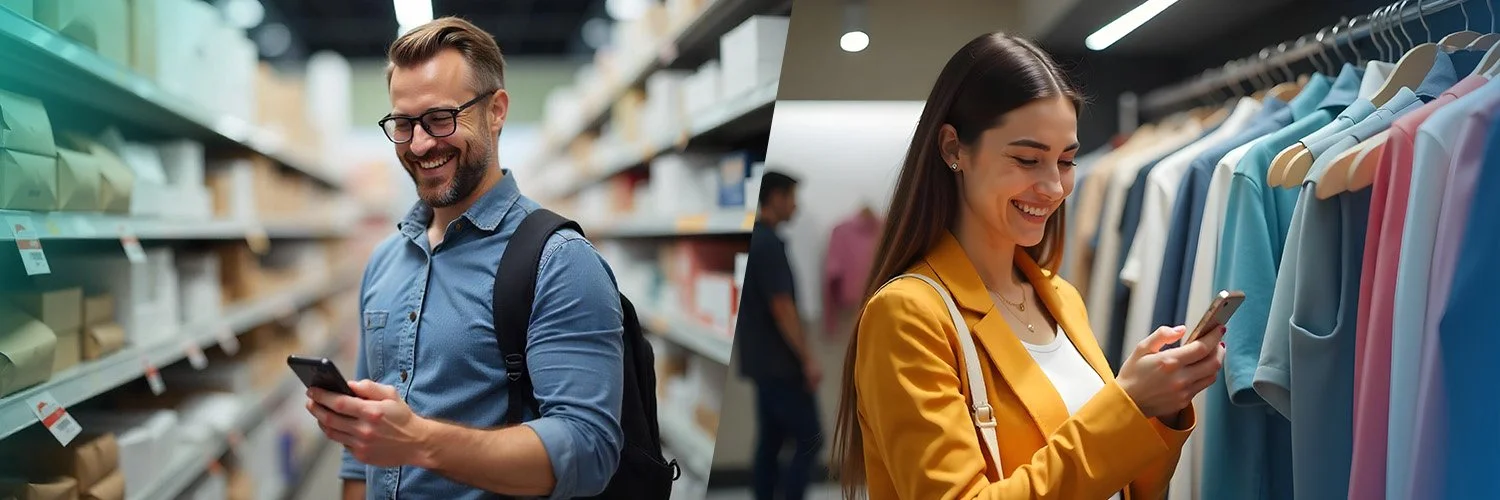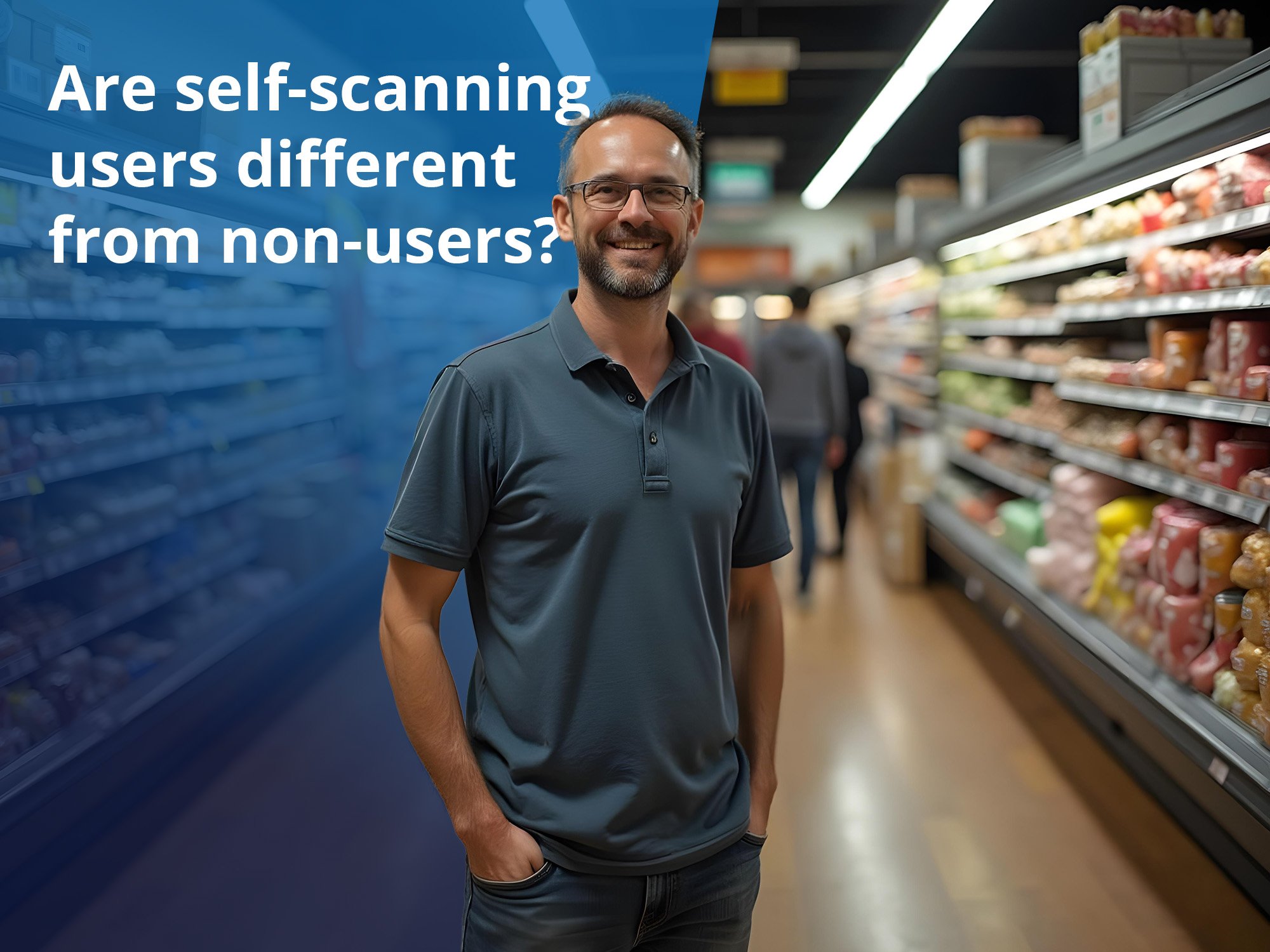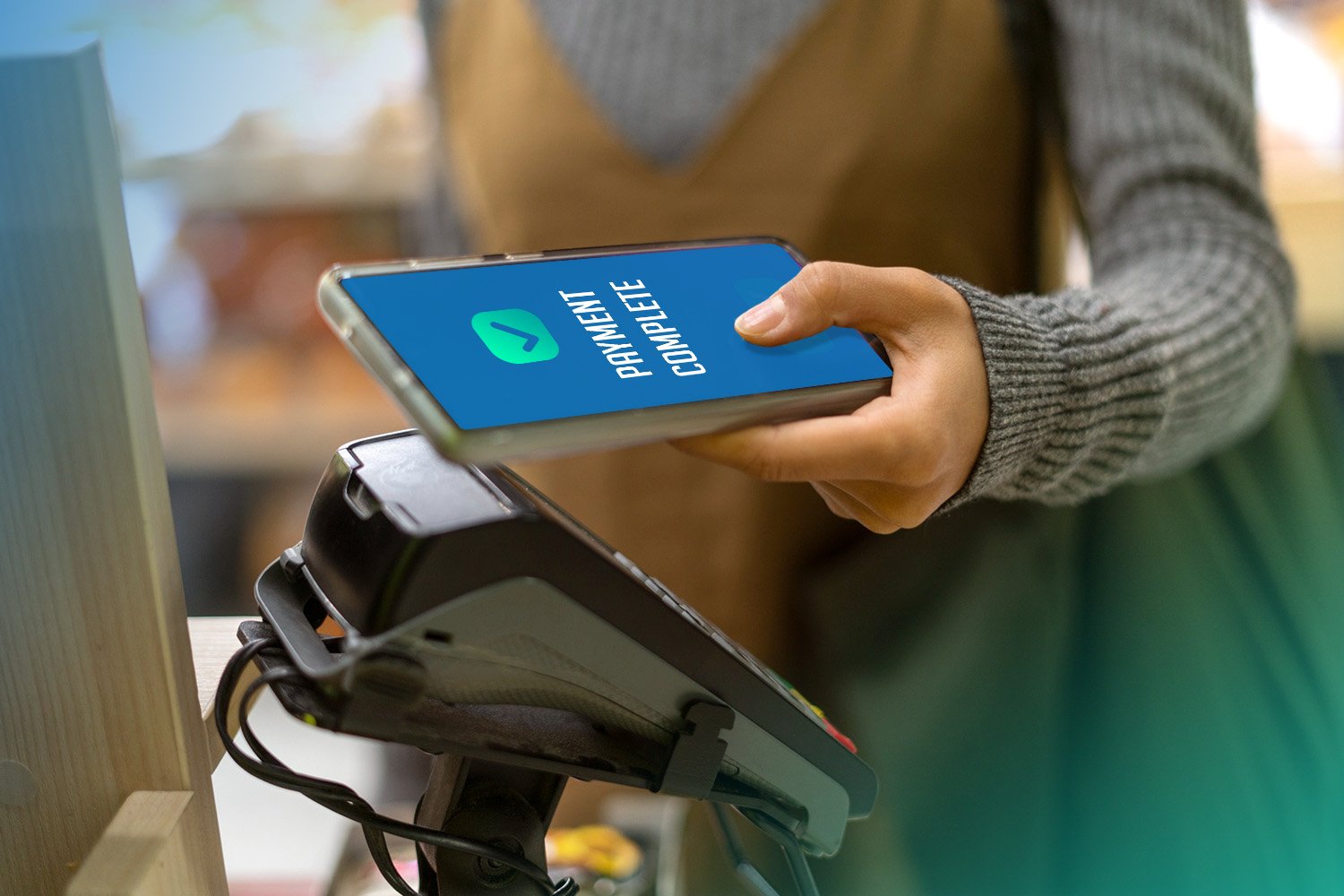Self-scanning – not only for grocery stores?
As self-scanning has grown in popularity during the last years, most consumers are not surprised to encounter this type of retail technology when visiting their favourite grocery store. While it is a good way to improve the weekly (or daily) grocery shopping experience, self-scanning has proved to be useful in other retail settings as well. Learn more about self-scanning in other retail stores here!
Self-scanning has traditionally been popular among grocery stores - but there are opportunities for other retailers too.
Both self-scanning and self-checkout have gained worldwide popularity during the last decade. While being different, they do share similar traits and are often interrelated in a retail context. As of now, approximately 57 000 stores globally offer mobile self-scanning to their customers.
Self-scanning in non-grocery stores
The benefits of self-scanning have been extensively researched and examined, both from a shopper and a retailer perspective. Not only is self-scanning a great way for retailers to gain useful data and to promote selected products, the shoppers have a way of avoiding time-consuming or aggravating moments during the shopping trip. But a lot of the focus has been on grocery stores. It does make sense, as grocery shopping tends to involve plenty of items bought on a daily or weekly basis, making some of the benefits of self-scanning obvious.
However, retailers in other industries can benefit from implementing self-scanning as well, for various reasons. This type of retail technology does not have benefits limited to larger supermarkets only. According to RBR, more than a third of the stores offering mobile self-scanning are non-grocery! Have a look at some of the examples below, where self-checkout has been implemented.
Self-scanning in fashion retail
Self-scanning in the fashion retail has so far been fairly limited, however this might be about to change. For example, mobile self-checkout is on the rise, and the attitude towards this type of retail technology has shifted. Research regarding consumers’ perception of mobile self-checkout shows that consumers that already have experience of mobile self-checkout, were more likely to have a positive attitude towards mobile self-checkout in fashion retail. Moreover, there was a difference when comparing genders, as men had a more favourable attitude than women.
Some retailers, such as Uniqlo, already offer self-checkout in their stores. Perhaps self-scanning is the next step?
Self-scanning in sporting goods
Similarly to fashion retail, some sporting goods retailers such as Decathlon now offers self-checkout technology in their stores, as a way of making the checkout process easier and with less staff involvement. As this self-checkout technology is based on RFID, and not on the barcode mostly used for self-scanning, it is unclear if this retailer will implement self-scanning as well.
One retailer who already does offer mobile self-scanning is Dick’s Sporting Goods – they integrated this function into their app already in 2012. As the self-scanning feature was integrated with the app, shoppers are able to earn scores in the retailer’s reward program, and to get product information directly in their smartphones.
Self-scanning in home decor and furniture
Also for retailers within home decor and furniture there is an opportunity to implement self-scanning. When a larger player like IKEA decides to implement mobile self-scanning, it has become apparent that this type of technology provides benefits for both retailers and consumers.
By providing self-scanning for furniture, the retailer shows that the size of the item does not matter when it comes to self-scanning – which is an obvious advantage compared to RFID checkout with designated baskets, where the item size is limited to the size of the RFID basket.
The Swedish furniture company Lagerhaus has also implemented retail-technology, in the form of self-checkout counters at the store exit. While not offering the same flexibility as self-scanning, it allows retailers to minimize the number of staffed checkouts.
Self-scanning in gas and convenience stores
While being similar to grocery stores in terms of product offerings, some would not consider convenience stores suitable for self-scanning due to their size and perhaps limited space for checkout stations and other infrastructure. But convenience stores like 7 eleven shows that self-scanning can be advantageous also for smaller stores. These types of stores might not cater to customers that are purchasing many items at a time, however their shoppers want a quick shopping experience with minimum friction.
This is true also for gas stations that sell additional items, usually this type of store wants to provide a fast and easy shopping journey for the customers, while simultaneously keep manned staff to a minimum. By providing more autonomous shopping, both the retailer and the shopper can benefit.
What will the future of self-scanning look like?
While some retail industries are more likely to implement mobile self-scanning than others, one can tell there is a general curiosity towards this type of retail technology. And the popularity is not expected to diminish anytime soon. According to RBR, the mobile self-scanning market is forecast to grow by an average of 20% per year, over the next six years.
“As more and more shoppers are getting used to self-scanning at their local grocery store, they look for the same feature in other stores they visit as well. The benefits of self-scanning are many – also for retailers that doesn’t sell groceries. But it is important to select a self-scanning solution that suits the specific store needs – not all solutions are the same. By utilizing smart features and seamless integrations, the engagement among shoppers is likely to increase.”, says Fredrik Englund, Managing Director at Datema Retail.
Regarding the devices for self-scanning, there are benefits to using both. In Europe, scanning devices provided by retailers have been particularly popular among both retailers and shoppers. Retailer-owned devices for self-scanning are handy when there are many items to purchase, whereas scanning using the smartphone is a smart way for retailers to save store space (as there is no need for any device set-up at the store entrance). It is likely that each store will need to test and find the most suitable alternative – using either ROD, BYOD or both.
As more solutions in the retail technology field are being introduced, such as smart carts, the future remains unknown. But the consumers’ shopping experience will stay in focus, not only for grocery stores.




